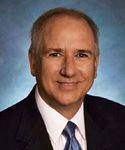- General Dermatology
- Eczema
- Chronic Hand Eczema
- Alopecia
- Aesthetics
- Vitiligo
- COVID-19
- Actinic Keratosis
- Precision Medicine and Biologics
- Rare Disease
- Wound Care
- Rosacea
- Psoriasis
- Psoriatic Arthritis
- Atopic Dermatitis
- Melasma
- NP and PA
- Skin Cancer
- Hidradenitis Suppurativa
- Drug Watch
- Pigmentary Disorders
- Acne
- Pediatric Dermatology
- Practice Management
- Prurigo Nodularis
Article
Anabolic androgenic steroid use, abuse on the rise
Use and abuse of anabolic androgenic steroids is on the rise, not just among athletes but also in the general population. Because dermatological manifestations are often the first indications of such behavior, dermatologists must know the common side effects associated with these drugs so they can treat the hallmark symptoms of abuse while educating patients.

Key Points
Seattle - Use and abuse of anabolic androgenic steroids is on the rise, not just among athletes but also in the general population. Because dermatological manifestations are often the first indications of such behavior, dermatologists must know the common side effects associated with these drugs so they can treat the hallmark symptoms of abuse while educating patients.

Typical symptoms
Other adverse events that can occur outside of the dermatologic field include testicular atrophy, a decreased sperm count and libido. According to Dr. Scott, most of the side effects can revert back to a normal state approximately four to six months after the patient ceases to take the offending steroid. However, some side effects may be permanent.
"Females who use and/or abuse anabolic androgenic steroids will typically have masculinization type of effects, including decreased breast size, a deepening of the voice, alopecia, as well as menstrual disorders. These side effects may be very slow to revert back to normal, or sometimes will remain, underscoring the need for clinicians to acutely recognize the association of these side effects with the use/abuse of anabolic androgenic steroids," Dr. Scott says.
According to Dr. Scott, many of these anabolic steroids can also be hepatotoxic. As a result, dermatologists may want to think twice about prescribing isotretinoin, tetracycline or other medications that may be synergistic and potentially aggravate the hepatotoxicity.
Anabolic androgenic steroids can also have a tremendous psychological effect, and patients using and/or abusing these drugs should receive counseling as well. "There's the psychological that needs to be addressed during the patient's visit as well as the dermatologic signs and symptoms," Dr. Scott says.





